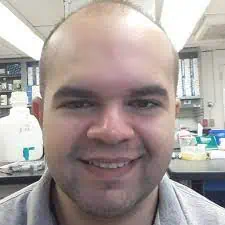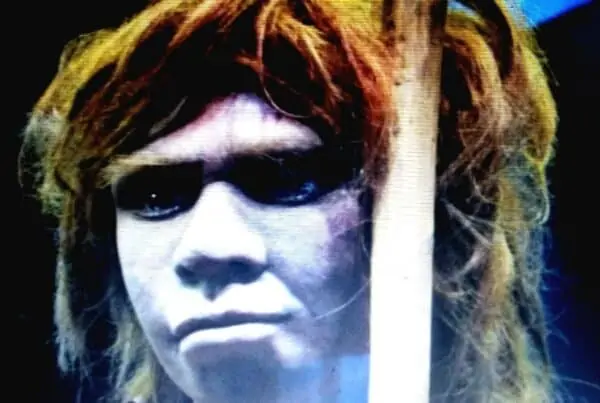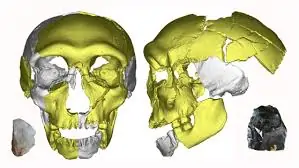John Hawks praises the studies authors including FAU’s Andre Luiz Campelo dos Santos for the amazing discovery
 John Hawks is well-known to readers of Subspecieist. He is the Department Head of Evolutionary Studies at the University of Wisconsin. He is also a friend and colleague of Professor Lee Berger of the University of Witwatersrand in South Africa, who discovered Australopithecus and Homo naledi.
John Hawks is well-known to readers of Subspecieist. He is the Department Head of Evolutionary Studies at the University of Wisconsin. He is also a friend and colleague of Professor Lee Berger of the University of Witwatersrand in South Africa, who discovered Australopithecus and Homo naledi.
Our most recent article, December 12,
Lee Berger’s stunning announcement: Evidence found of Homo naledi fire use in Rising Star cave
Andre Luis Campello de Santos is a PhD in Archaeology and a professor at Florida Atlantic University, FAU · Department of Computer and Electrical Engineering and Computer Science.
On December 8, Dr. Hawks Tweeted out to his 26,000 followers:
New paper in AmJbioAnth by Campello de Santos et al surveys ancient DNA from across the Americas. Intriguing suggestion of ancentral component related to Oceanian populations.
From the Abstract of the new paper,
Genomic evidence for ancient human migration routes along South America’s Atlantic coast
 An increasing body of archaeological and genomic evidence has hinted at a complex settlement process of the Americas by humans. This is especially true for South America, where unexpected ancestral signals have raised perplexing scenarios for the early migrations into different regions of the continent. Here, we present ancient human genomes from the archaeologically rich Northeast Brazil and compare them to ancient and present-day genomic data. We find a distinct relationship between ancient genomes from Northeast Brazil, Lagoa Santa, Uruguay and Panama, representing evidence for ancient migration routes along South America’s Atlantic coast.
An increasing body of archaeological and genomic evidence has hinted at a complex settlement process of the Americas by humans. This is especially true for South America, where unexpected ancestral signals have raised perplexing scenarios for the early migrations into different regions of the continent. Here, we present ancient human genomes from the archaeologically rich Northeast Brazil and compare them to ancient and present-day genomic data. We find a distinct relationship between ancient genomes from Northeast Brazil, Lagoa Santa, Uruguay and Panama, representing evidence for ancient migration routes along South America’s Atlantic coast.
To further add to the existing complexity, we also detect greater Denisovan than Neanderthal ancestry in ancient Uruguay and Panama individuals. Moreover, we find a strong Australasian signal in an ancient genome from Panama. This work sheds light on the deep demographic history of eastern South America and presents a starting point for future fine-scale investigations on the regional level.
The studies authors include:
Andre Luiz Campelo dos Santos, Amanda Owings, Henry Socrates, Lavalle Sullasi, Omer Gokcumen, Michael DeGiorgio and John Lindo.
Ancient DNA analysis unravels the early peopling of South America
Professor Campelo de Santos has since published another paper, on the closely related subject matter of North American Beringian populations’ DNA, December 8, 2022,
Spatiotemporal fluctuations of population structure in the Americas revealed by a meta‐analysis of the first decade of archaeogenomes
 “It’s phenomenal that Denisovan ancestry made it all the way to South America,” says John Lindo, Ph.D., a co-corresponding author of the article who specializes in ancient DNA analysis and is an assistant professor in the Department of Anthropology at Emory University. “The admixture must have occurred a long time before, perhaps 40,000 years ago.
“It’s phenomenal that Denisovan ancestry made it all the way to South America,” says John Lindo, Ph.D., a co-corresponding author of the article who specializes in ancient DNA analysis and is an assistant professor in the Department of Anthropology at Emory University. “The admixture must have occurred a long time before, perhaps 40,000 years ago.Connection to the enigmatic 3rd Denisovan population in Oceania?
Denisovan DNA as high as 6% discovered by Swedish team in Philippines Ayta
 A team of computational geneticists and human evolution scientists, have just identified the most unique human population of our species alive today. Their research paper was released on August 12, and has since garnered worldwide media attention.
A team of computational geneticists and human evolution scientists, have just identified the most unique human population of our species alive today. Their research paper was released on August 12, and has since garnered worldwide media attention.New clue to human evolution’s biggest mystery emerges in Philippines
Denisovan DNA lives on in some humans today because, once our Homo sapien ancestors encountered the Denisovans, they had sex with them and gave birth to babies – something geneticists call admixture. By analyzing current-day genetic data, we can look back into human history.
The “admixing” happened more than 50,000 years ago, as modern humans moved out of Africa and likely crossed paths with both Neanderthals and Denisovans. But pinning down exactly where it happened has proven difficult – particularly in the case of Denisovans.
Note – the cover photo for this article is of the Ayta Magbukon tribe in isolated rural Philippines.


